 Image search results - "Cultural" Image search results - "Cultural" |
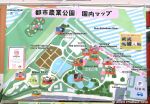
Adachi City Urban Agricultural Park is a riverside park at the corner of Arakawa River and Shin-Shibakawa River growing many varieties of cherry blossoms including those from Washington, DC planted here in 1981-82.
|
|
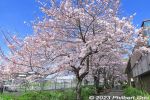
The most prominent cherry blossoms from Washington, DC are the Somei-Yoshino cherry blossoms named "America." They bloom in late March along Shin-Shibakawa River.
|
|
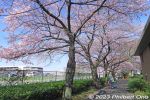
These Somei-Yoshino "America" cherry blossoms are right behind the park's Visitors' Center. The America trees stretch along Shin-Shibakawa River for a few hundred meters, one of the park's major cherry blossom clusters.
|
|
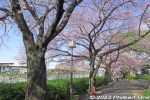
I visited one or two days before peak bloom, so they don't look as fluffy or full. The weather forecast was for cloudy or rainy skies after this day.
|
|
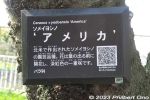
"America" cherry blossom tree ID tag on a sakura tree.
|
|
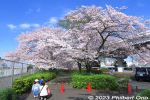
This was one in full bloom.
|
|
|
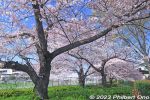
"America" cherry trees in Adachi, Tokyo.
|
|
|
|
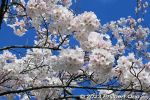
"America" cherry blossoms in full bloom.
|
|
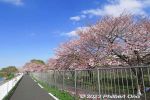
"America" Somei-Yoshino cherry blossoms decorated the Shin-Shibakawa riverbank from here. They were in parallel with a riverside walking/cycling path on the left.
|
|

These were still one or two days before peak bloom.
|
|
|
|
|
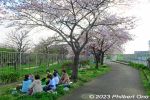
Hanami picnic under the America cherry blossoms. Feeling the Spirit of America.
|
|
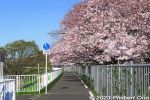
A long cycling path goes along Shin-Shibakawa River and the America cherry blossoms.
|
|
|
|
|
|
|
|
|
|
|
|
|
|
|
|
|
|
|
|
|
|
|
|
|
|
|
|
|
|
|
|
|
|
|
|
|
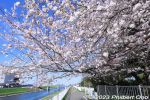
This is the end of the "America" Somei-Yoshino cherry blossoms.
|
|

The famous Clock Tower or Tokeidai is overshadowed by much bigger and modern buildings in central Sapporo. A short walk from Sapporo Station and Odori Park.
|
|

The Clock Tower was built in 1878 as part of the Sapporo Agricultural College established largely by three Americans from Massachusetts: Dr. Willian S. Clark, William Wheeler, and David P. Penhallow.
|
|

The Clock Tower was used as a drill hall and ceremony hall. After the college moved, the building was used by local citizens for cultural purposes such as a library and lecture hall.
|
|

The construction of the tower and installation of the clock was completed in 1881. The clock was made by Howard Clock Co. of Boston, MA. It is still in the Clock Tower, sounding its original chime.
|
|

Front entrance of the Clock Tower.
|
|

The Sapporo Clock Tower is an Important Cultural Property.
|
|

The clock inside the tower is Japan's oldest. The gears and other main parts are also still the original ones. Thanks to excellent care and maintenance, the clock has come this far.
|
|
|
|
|

Inside the Sapporo Clock Tower. The first floor has various display panels and exhibits.
|
|

The exhibits explain about the history of Hokkaido's early settlement and development.
|
|

Scale model of what the Sapporo Agricultural College looked like. Notice the Clock Tower. In those days, Sapporo's population was only 2,600.
|
|

Records of songs which mention the Clock Tower.
|
|
|

Panel showing foreign instructors who taught at Sapporo Agricultural College.
|
|

Second floor of the Clock Tower. Mostly pews for a lecture hall.
|
|

A working clock
|
|

On New Year's Eve, a crowd gathers to hear the Clock Tower ring in the New Year.
|
|
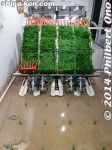
Rear of rice transplanter.
|
|

Closeup of Rice transplanter. When one arm goes down to plant, the other goes up to pick another seedling.
|
|
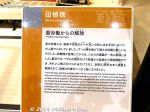
About the rice transplanter.
|
|
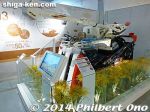
Combine to harvest rice.
|
|
|

Built in 1888, the former Hokkaido Government Office Building is one of Hokkaido's most famous buildings at the heart of Sapporo. With its red brick walls, it stands out among Sapporo's more modern buildings.
|
|

The building was akin to Hokkaido's capitol where the governor's office was located. It was used for 80 years. Open 9 am - 5 pm, closed Dec. 29-Jan. 3. Free admission. Near Sapporo Station's south exit and visible from Ekimae-dori road.
|
|

Nicknamed "Akarenga Chosha" (Red Brick Government Building), a fire in 1909 gutted the interior, but the exterior was little damaged. The building was restored in 1911. 赤れんが庁舎
|
|

Most of the building materials, stones and wood, were procured from Hokkaido. The building is flanked by yaezakura cherry trees which bloom in early May.
|
|

Tulips also give a colorful touch to the grounds. In 1968, the building was restored to its original state, and it has been preserved since then. It has an American Neo-baroque style.
|
|

In March 1969, it was designated as an Important Cultural Property. Its 2.5 million bricks were made locally and laid in a French style.
|
|
|
|

The roof has chimney-like ventilation outlets.
|
|
|

Former Hokkaido Government Office Building and tulips, Sapporo
|
|

Former Hokkaido Government Office Building and yaezakura cherry blossoms, Sapporo
|
|

Adjacent pond and cherry blossoms
|
|
|

G8 Summit countdown sign
|
|

The interior of the Former Hokkaido Government Office Building is just as dignified as the exterior. This triple-arch staircase is what you first see when you enter the building.
|
|

Rear of the triple-arch staircase.
|
|

Going to the 2nd floor.
|
|

Most of the rooms open to the public are on the 2nd floor.
|
|

Staircase and G8 Summit sign
|
|

Second floor corridor.
|
|

On the right is the entrance to the former Governor's office
|
|

The second floor has several large rooms. This is the Hokkaido Archives where Hokkaido's historical documents and records are kept.
|
|

Cannon balls
|
|

Inside the former office of the Governor. There's a large conference table and the walls are decorated with portraits of past Hokkaido governors.
|
|

Portraits of past Hokkaido governors. The bottom row are the most recent governors.
|
|

A stately room. The governor's desk is in the right corner.
|
|

Governor's desk in the governor's former office.
|
|

Another room on the 2nd floor shows Hokkaido's international relations with sister states in Alberta, Canada; Massachusetts, USA; and Heilongjiang, China.
|
|

From Alberta, Canada
|
|

From Massachusetts, USA. The famous Dr. William Clark was from this US state.
|
|

Photos of international sister state exchanges.
|
|

Red bricks
|
|

Karafuto/Sakhalin Resource Library
|
|

Hokkaido History Gallery occupies another room on the 2nd floor.
|
|

Hokkaido History Gallery includes wildlife exhibit.
|
|

There's also the Northern Territories Room with exhibits clamoring for the return of the northern territories (Shikotan, Habomai, Etorofu). now occupied by Russia.
|
|
|

Petition for the return of the Northern Territories. As of late April 2008, over 80.3 million people signed the petition.
|
|

Poster for the return of the Northern Territories
|
|

Poster for the return of the Northern Territories. Her braided hair resembles the northern islands.
|
|

First floor corridor. Most of the rooms on the 1st floor are closed to the public.
|
|

Point Zero for Hokkaido's travel distances.
|
|

Along the road to the former government building are display panels about Hokkaido's hisotry. Here's one about the early foreigners in Hokkaido.
|
|

A short bus ride takes you to Shigaraki Ceramic Cultural Park, opened in June 1990. Open from 9 am to 5 pm, closed on Mon. (open if a national holiday and closed on Tue.). This is Shigaraki's main attraction and home of Shigaraki-yaki pottery.
|
|

Shigaraki Ceramic Cultural Park is called Togei no Mori in Japanese. It is operated by Shiga Prefecture. Free admission. 陶芸の森 MAP
|
|

Shigaraki Ceramic Cultural Park is in a large park-like area with various pottery facilities such as this Exhibition Hall of Industrial Ceramics. 産業展示館
|
|

When I visited in mid-Oct., the Shigaraki Ceramic Cultural Park was holding the Ceramic Art Market. Notice the tents for the ceramic artists selling their works.
|
|

The Ceramic Art Market in Shigaraki Ceramic Cultural Park has ceramics artists having their own booth to sell their wares.
|
|
|
|
|
|
|

Shigaraki Tanuki mascot walked around the site.
|
|

Confection
|
|

Inside the Exhibition Hall of Industrial Ceramics. 産業展示館
|
|

Steps going up the hill at Shigaraki Ceramic Cultural Park. Good exercise.
|
|

Greenery at the Shigaraki Ceramic Cultural Park.
|
|

Azaleas would be beautiful in early May.
|
|

At the top of the hill is the Museum of Contemporary Ceramic Art called Togeikan. 陶芸館
|
|

Shigaraki Ceramic Cultural Park also has pottery kilns. Here's one "Anagama" cave kiln.
|
|

Pottery kilns require large amounts of wood.
|
|

"Anagama" kiln diagram and explanation in Japanese and English.
|
|

Noborigama sloping kiln 登り窯
|
|

"Anagama" kiln.
|
|

"Noborigama" sloping kiln 登り窯
|
|

Side entrances of noborigama kiln. 登り窯
|
|

Inside the kiln. This one was open and empty, but some were closed and you could feel the warmth on the door.
|
|

Inside a side entrance of a noborigama kiln. 登り窯
|
|

"Noborigama" kiln explanation in Japanese and English. 登り窯
|
|

"Noborigama" kiln
|
|

Ceramic seats
|
|

More outdoor ceramic art. This is outside the Institute of Ceramic Studies where invited artists in residence create and do research and workshops and lectures are held.
|
|
|
|
|
|
|